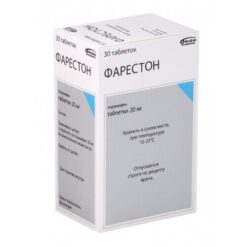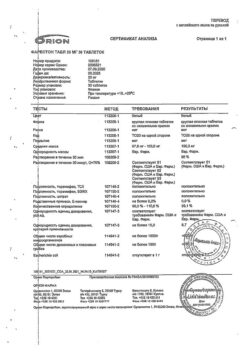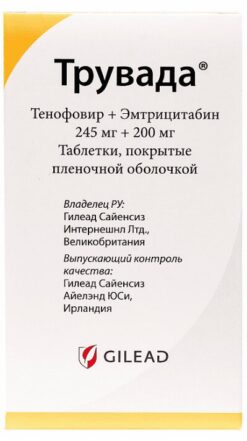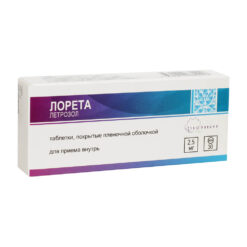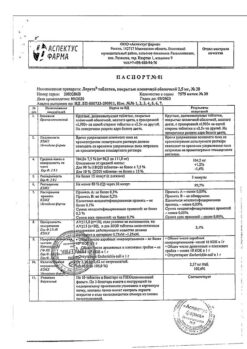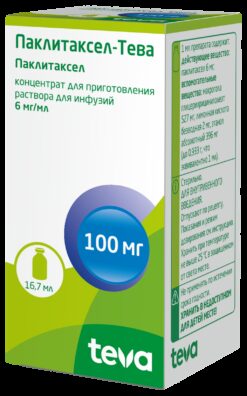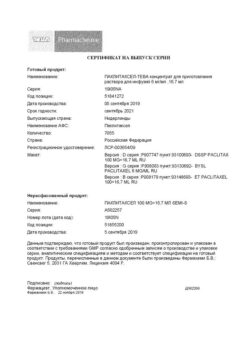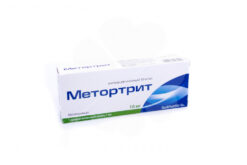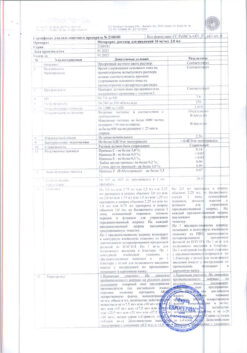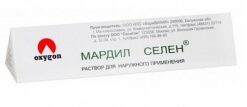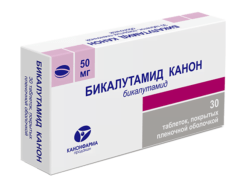Subtotal: €26.80
Pharmacodynamics
Mechanism of Action
The expression of programmed cell death receptor 1 (PD-L1) ligand protein is a response to the effects of the adaptive immune system that allows tumors to avoid detection and elimination by the immune system.
PD-L1 expression can be induced by inflammatory signals (e.g. IFN-gamma) and occurs in both tumor cells and tumor-associated immune cells in the tumor microenvironment. PD-L1 blocks T-cell function and activation through interaction with PD-1 and CD80 (B7.1).
Binding to the corresponding receptors, PD-L1 reduces cytotoxic activity of T cells, proliferation and cytokine production.
Durvalumab is a fully human, high-affinity monoclonal antibody, immunoglobulin G1 kappa (IgGlK) that selectively blocks PD-L1 interaction with PD-1 or CD80 (B7.1), while not affecting PD-1 and PD-L2 interaction.
Durvalumab does not induce antibody-dependent cellular cytotoxicity. Selective blockade of interactions between PD-L1 and PD-1 and PD-L1 and CD80 leads to an increased antitumor immune response, which can lead to tumor elimination.
In preclinical studies, PD-L1 blockade resulted in increased T-lymphocyte activation and reduced tumor size.
Pharmacokinetics
The pharmacokinetics of durvalumab were studied in 1902 patients, with doses ranging from 0.1 mg/kg to 20 mg/kg and the drug administered once every two, three or four weeks.
The pharmacokinetic effects increased more than proportionally to the dose (nonlinear pharmacokinetics) at doses of < 3 mg/kg and proportionally to the dose (linear pharmacokinetics) at doses of ≥3 mg/kg. An equilibrium state was reached after approximately 16 weeks.
Based on a population pharmacokinetic analysis that included data from 1878 patients who received the drug at doses ≥10 mg/kg every 2 weeks, the geometric mean volume of distribution at equilibrium (Vss) was 5.64 liters.
The clearance of durvalumab decreased over time, resulting in a geometric mean equilibrium clearance (CLss) of 8.16 mL/hour at day 365 of therapy; the decrease in CLss is not considered clinically significant. Based on baseline clearance, the half-life was approximately 18 days.
Pharmacokinetics in Special Patient Groups
Age (19-96 years), body weight (34-149 kg), sex, presence of antibodies to durvalumab, albumin concentration, lactate dehydrogenase activity, creatinine concentration, soluble PD-L1 concentration, tumor type, race, Mild renal impairment (creatinine clearance (CK) 60-89 mL/min), moderate renal impairment (CK 30-59 mL/min), mild renal impairment (bilirubin ≤ upper limit of normal (ULN) and aspartate aminotransferase (ACT) activity > HGH or bilirubin concentration > HGH up to 1.5×HGH for any ACT activity) and general status according to the WHO/ECOG scale had no clinically significant effect on the pharmacokinetics of durvalumab.
The effect of severe renal impairment (CKR 15-29 mL/min) or moderate hepatic impairment (bilirubin concentration >1.5×VGN to 3×VGN and any ACT activity) and severe hepatic impairment (bilirubin concentration >3×VGN and any ACT activity) on durvalumab pharmacokinetics is unknown.
Elderly Patients
Dose adjustment in elderly patients (≥65 years) is not required. Of the 476 patients with locally advanced unresectable non-small cell lung cancer (NSCLC) in the PACIFIC (primary efficacy evaluation population) study who received Imfinsi®, 215 patients were 65 years of age or older. Overall, there were no differences in safety profiles between patients aged 65 and older and younger patients.
Indications
Unresectable locally advanced non-small cell lung cancer in adult patients who have not progressed after platinum-based chemoradiotherapy.
Pharmacological effect
Pharmacodynamics
Mechanism of action
Programmed cell death receptor ligand 1 (PD-L1) protein expression is a response to the adaptive immune system that allows tumors to evade detection and clearance by the immune system.
PD-L1 expression can be induced by inflammatory signals (eg, IFN-gamma) and occurs in both tumor cells and tumor-associated immune cells in the tumor microenvironment. PD-L1 blocks T cell function and activation through interaction with PD-1 and CD80 (B7.1).
By binding to appropriate receptors, PD-L1 reduces the cytotoxic activity of T cells, proliferation and cytokine production.
Durvalumab is a fully human, high-affinity immunoglobulin G1 kappa (IgGlK) monoclonal antibody that selectively blocks the interaction of PD-L1 with PD-1 or CD80 (B7.1), while sparing the interaction between PD-1 and PD-L2.
Durvalumab does not induce antibody-dependent cellular cytotoxicity. Selective blockade of interactions between PD-L1 and PD-1 and PD-L1 and CD80 results in an enhanced antitumor immune response that can lead to tumor clearance.
In preclinical studies, PD-L1 blockade resulted in increased T-cell activation and decreased tumor size.
Pharmacokinetics
The pharmacokinetics of durvalumab were studied in 1902 patients, with doses ranging from 0.1 mg/kg to 20 mg/kg and administered once every two, three, or four weeks.
Pharmacokinetic effects increased more than dose proportionally (nonlinear pharmacokinetics) at doses <3 mg/kg and dose proportionally (linear pharmacokinetics) at doses ≥3 mg/kg. Steady-state was achieved after approximately 16 weeks.
Based on a population pharmacokinetic analysis that included data from 1878 patients receiving the drug at doses ≥10 mg/kg every 2 weeks, the geometric mean volume of distribution at steady state (Vss) was 5.64 L.
Clearance of durvalumab decreased over time, resulting in a geometric mean steady-state clearance (CLss) of 8.16 mL/hour at day 365 of therapy; the decrease in CLss is not considered clinically significant. Based on baseline clearance, the half-life was approximately 18 days.
Pharmacokinetics in special groups of patients
Age (19-96 years), body weight (34-149 kg), gender, presence of antibodies to durvalumab, albumin concentration, lactate dehydrogenase activity, creatinine concentration, soluble PD-L1 concentration, tumor type, race, mild renal dysfunction (creatinine clearance (CR) 60-89 ml/min), moderate renal dysfunction (CR 30-59 mL/min), mild liver dysfunction (bilirubin ≤ upper limit of normal (ULN) and aspartate aminotransferase (AST) > ULN or bilirubin concentration > ULN up to 1.5 x ULN with any AST activity) and WHO/ECOG performance status did not have a clinically significant effect on the pharmacokinetics of durvalumab.
The effect of severe renal impairment (CrCl 15-29 ml/min) or moderate hepatic impairment (bilirubin concentration >1.5 x ULN to 3 x ULN and any AST activity) and severe hepatic impairment (bilirubin concentration >3 x ULN and any AST activity) on the pharmacokinetics of durvalumab is unknown.
Elderly patients
No dose adjustment is required in elderly patients (≥65 years). Of the 476 patients with locally advanced unresectable non-small cell lung cancer (NSCLC) in the PACIFIC (Primary Efficacy Population) study treated with Imfinzi, 215 patients were aged 65 years or older. Overall, there were no differences in safety profiles between patients aged 65 years and older and younger patients.
Active ingredient
Durvalumab
Composition
1 ml of concentrate contains:
Active ingredient:
durvalumab 50 mg
Excipients:
L-histidine 2 mg,
L-histidine hydrochloride monohydrate 2.7 mg,
α,α-trehalose dihydrate 104 mg,
polysorbate 80 0.2 mg,
water for injection approximately 900 mg.
Pregnancy
Women with preserved reproductive function
Fertile women should use reliable contraception during durvalumab therapy and for at least 3 months after the last dose.
Pregnancy
There are no data on the use of durvalumab in pregnant women. Based on its mechanism of action, durvalumab may have effects on pregnancy and may cause harm to the fetus when used during pregnancy.
In a mouse model of allogeneic pregnancy, it was shown that disruption of signal transduction through PD-L1 leads to an increased incidence of fetal loss. No reproductive toxicity was observed in animal studies.
Human immunoglobulin IgGl penetrates the placental barrier. In animal studies, durvalumab has also been shown to cross the placental barrier. Using durvalumab during pregnancy may cause harm to the fetus.
Therefore, durvalumab should not be used during pregnancy or in the absence of reliable contraception during therapy, and for at least 3 months after the last dose of the drug.
Breastfeeding
There is no information regarding the excretion of durvalumab into breast milk. According to the results of toxicological studies, low concentrations of durvalumab were detected in the milk of cynomolgus macaques on the 28th day after birth.
In humans, monoclonal antibodies can be secreted into breast milk, but there is no data on their possible absorption and harm to the newborn. However, a risk to breastfed infants cannot be excluded.
Therefore, you should either stop breastfeeding or withhold durvalumab therapy, taking into account the benefits of breastfeeding for the infant and the benefits of durvalumab therapy for the woman.
Fertility
There are no data on the possible effects of durvalumab on fertility in animals or humans.
Contraindications
Hypersensitivity to durvalumab or excipients included in the drug.
Children under 18 years of age.
Pregnancy and breastfeeding period.
Moderate to severe liver dysfunction.
Caution: severe autoimmune diseases in the active stage, in which further activation of the immune system may pose a potential threat to life.
Interaction
The use of systemic glucocorticosteroids or immunosuppressants before initiating durvalumab therapy, with the exception of systemic glucocorticosteroids in physiological doses (up to 10 mg prednisolone per day or equivalent), is not recommended due to the possible effect on the pharmacodynamic activity and efficacy of durvalumab.
However, systemic corticosteroids and immunosuppressants may be used after initiation of durvalumab therapy for the treatment of immune-mediated adverse reactions (see section “Special Instructions”).
No formal drug interaction studies have been conducted with durvalumab. Since the main pathways of metabolism of durvalumab are protein catabolism involving the reticuloendothelial system and target-mediated clearance, interactions with other drugs at the metabolic level are not expected.
Overdose
In case of an overdose of Imfinzi®, there is no specific treatment, and the symptoms of overdose have not been established. In case of overdose, symptomatic treatment and general supportive measures should be carried out.
Storage conditions
At temperatures from 2 to 8 °C.
Keep out of the reach of children.
Shelf life
3 years.
Manufacturer
Catalent Indiana LLC, USA
| Shelf life | 3 years. |
|---|---|
| Conditions of storage | At a temperature of 2 to 8 ° C. Keep out of reach of children. |
| Manufacturer | Catalent Indiana LLC, USA |
| Medication form | concentrate for preparation of infusion solution |
| Brand | Catalent Indiana LLC |
Related products
Buy Imfinzi, 50 mg/ml 10 ml with delivery to USA, UK, Europe and over 120 other countries.



